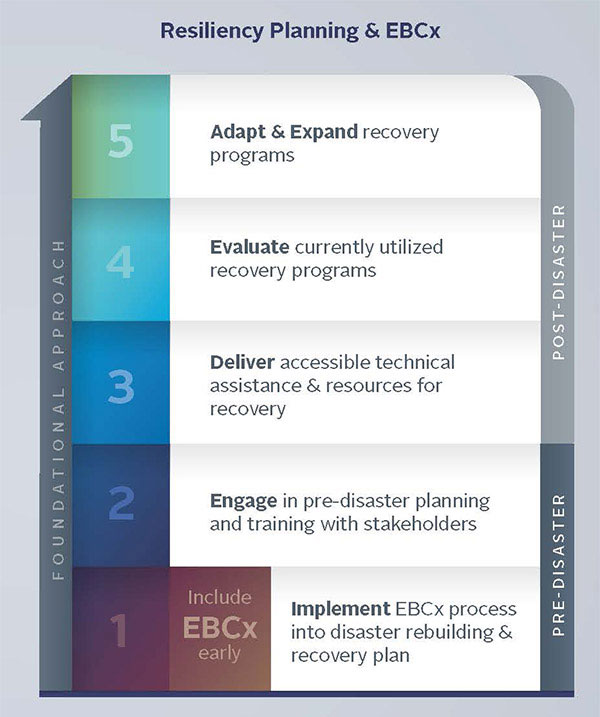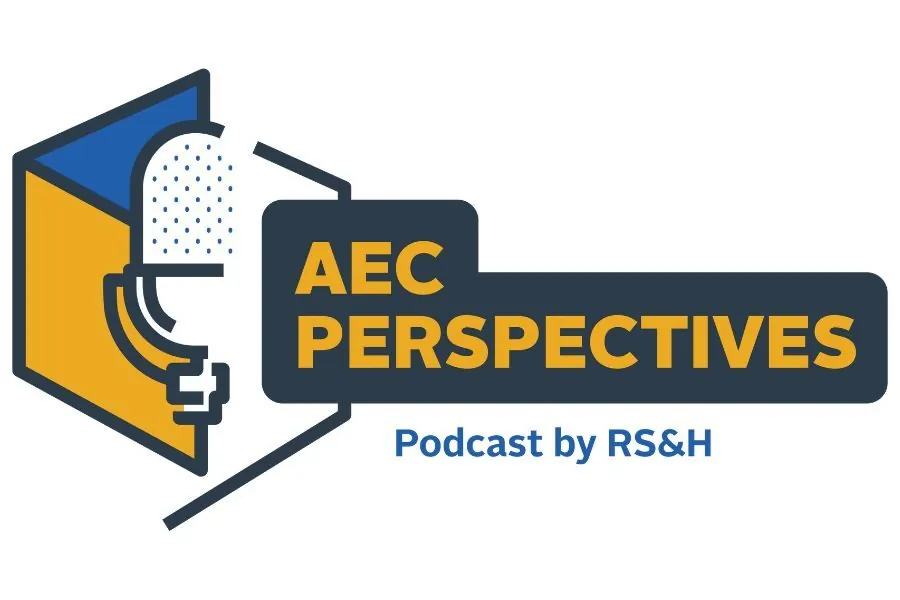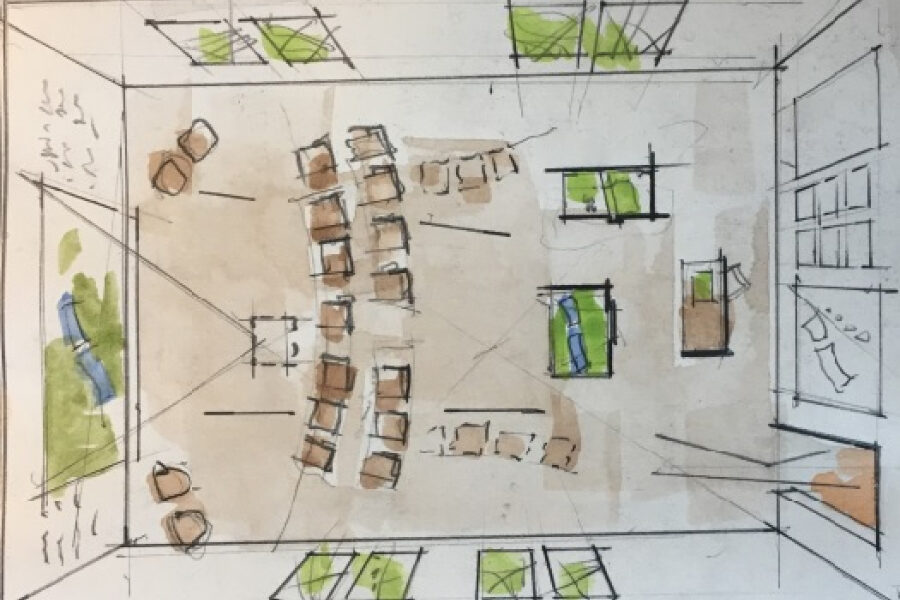Novel Concept: Designing Resilient Buildings

Resiliency needs to be introduced as an integral part of the commissioning process to ensure facilities can quickly bounce back from disaster, either natural or manmade. It is time to not only focus on bulk power integrity but also to apply energy resiliency to the facility level.
The need for energy resilience at the facility level was illustrated by the devastating hurricanes that affected the Texas Gulf Coast, Houston, Florida, Puerto Rico, and multiple earthquakes in Mexico. Ensuring that facility systems maintain reliability and support energy resiliency is the ultimate focus and goal of successful Existing Building Commissioning (EBCx). Facility EBCx is as critical, if not the most important aspect, of energy resiliency.
Energy Resilience
The components of energy resiliency are divided into three focus areas: utilities, security, and facility. Predominant attention in resiliency is at the utility level (electricity, gas, and water). This complements the security aspects of energy resiliency focusing on building physical security, communications, and cybersecurity. Finally, at the facility level, the focus is on HVAC, lights, power, life safety, and plumbing, which are all vetted in the EBCx process. These components combined are meant to ensure that bulk power systems are secure, prepared to withstand attack, and able to rapidly recover from a natural or manmade disaster.
The Commissioning Process
Commissioning is a quality-focused process structured to enhance the delivery of a project by documenting that the facility has met all the owner’s project requirements. Existing Building Commissioning (EBCx) is performed to ensure that the existing building’s systems and assemblies are operated and maintained to meet Current Facility Requirements (CFR). Retro-commissioning is the process applied to an existing building that has never been commissioned, where the focus is on the building’s performance and how to improve the utility and energy consumption. Re-commissioning is the process that is applied to an existing building that was commissioned but no longer meets the operational needs of the owner.
The EBCx process has five stages: Pre-Planning, Planning, Investigation, Implementation, and Hand-Off. During the Planning phase, a thorough understanding of the CFR is needed. The CFR is created from the functional requirements of the existing building, which include building use and occupancy, sustainability, physical and cyber security, energy efficiency, life safety, HVAC, power/lighting, and water usage. Through the prism of energy resiliency, it is important to identify the contingency operational needs of the facility in the EBCx Planning phase.
By offering diverse commissioning options, owners can see a rapid return on investment through reduced risk, significant energy savings, waste reduction, and many other benefits. The sooner commissioning can be accomplished during design and construction, the result will be a better, more durable facility for the owner.
How Does Energy Resiliency and EBCx Fit Together?
We do a lot of things to make buildings better, but resiliency can be overlooked. Many existing buildings are not performing to their original design intent or not taking full advantage of recent innovations and energy-saving strategies that make the facility vulnerable to natural or manmade disasters. We are already implementing resiliency and commissioning measures, but they are applied independently of each other. If we combine these two concepts to work together, our buildings will be better prepared to withstand an attack and be positioned to mitigate damage, avoiding the additional costs of time and resources to recover.
Building codes, financing, training, incentives, and facility manager education programs are the foundation of resiliency planning. A piece missing from that foundation is commissioning. By implementing commissioning, resiliency planning goals can be prioritized using the CFR. Introducing commissioning concepts early will enhance resilience plans, contribute to overall facility planning, reduce system downtime, and maintain facility mission readiness.
The next time a devastating disaster hits your facility, there will be comfort in knowing that you have a resilient, commissioned building that will withstand the event and save time and money in the long run.





